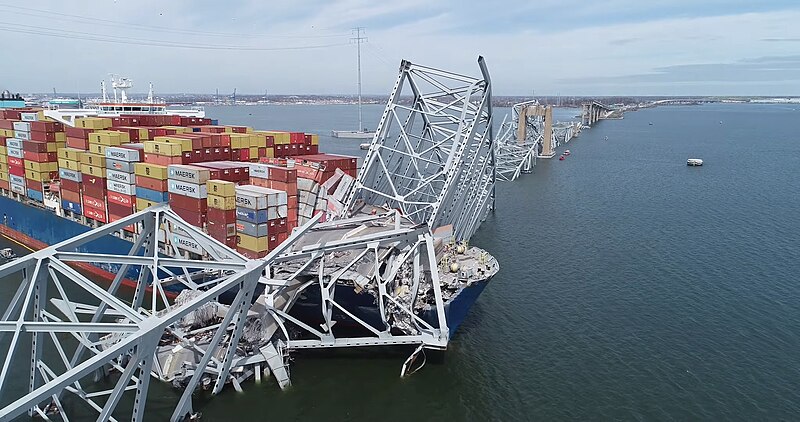
The Biden administration has lauded the quick reopening of Baltimore's main shipping channel, less than three months after the collapse of the Francis Scott Key
Bridge. Officials attribute this success to expertise developed from a Covid-19-era task force, the response to a highway overpass collapse, and the 2021 infrastructure law.
The March 26 collision of the Singapore-flagged cargo ship Dali into the Key Bridge had crippled a vital transportation artery for the US Northeast. In response, President Joe Biden immediately directed his aides to expedite the channel's reopening and the bridge's reconstruction, pledging that the federal government would cover all costs.
Federal officials announced on June 10 that full access to the channel had been restored following the removal of 50,000 tonnes of debris. The Coast Guard quickly established a unified command to coordinate search, recovery, and response efforts, involving over 1,500 responders from 56 federal, state, and local agencies, along with 500 specialists.
White House Deputy Chief of Staff Natalie Quillian emphasized the importance of establishing a unified command. “There was clear command and control of a very complex operational challenge across stakeholders from federal and state government and the private sector,” she told Reuters.
The US Army Corps of Engineers (USACE), responsible for the federal navigation channel, leveraged the expertise of the US Navy Supervisor of Salvage for the massive operation. Colonel Estee Pinchasin, Baltimore district commander for USACE, highlighted the unified command's effectiveness in setting an ambitious timetable for reopening the channel.
In the aftermath of the collapse, a council created by Biden in 2021 to address Covid-related supply chain shortages was convened, and federal agencies established specialized offices to monitor supply chain issues. Lael Brainard, White House National Economic Council director, noted that protocols developed during the pandemic facilitated the rapid response.
Brainard also referenced lessons learned from the June 2023 collapse of an Interstate-95 overpass in Philadelphia, which was quickly reopened. She and Transportation Secretary Pete Buttigieg led efforts to ensure business, labor, and port operators had the information needed to develop rapid workaround plans.
The $1 trillion infrastructure law, which has significantly increased spending on bridges and other projects, provided the administration with the expertise and resources to tackle such challenges. Buttigieg's office approved $60 million in emergency funds for Maryland to rebuild and remove debris, while the US Army Corps and Coast Guard have spent nearly $100 million on the bridge response and debris removal.
Buttigieg also repurposed a grant to create additional cargo areas and waived hours of service limits for affected trucking. “When the president of the United States says that every part of this administration should do everything you can think of within the limits of law, we can actually move quite quickly,” Buttigieg told Reuters.
A replacement bridge is estimated to cost between $1.7 billion and $1.9 billion, with federal officials working to expedite environmental approvals. Maryland hopes to complete the new bridge by late 2028. Photo by NTSBgov, Wikimedia commons.






































